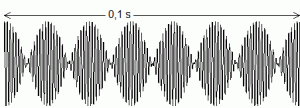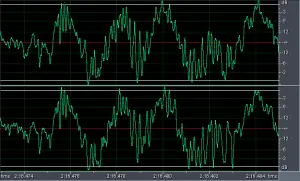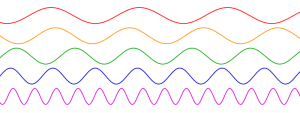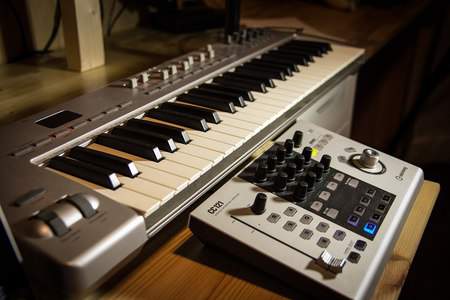The modern world of music is constantly innovating. This leads to new technology, processes, and techniques available to musicians and producers.
Keeping up with this innovation can be challenging. Spectral effects are part of this musical innovation – but they can be very confusing, leaving many producers and musicians wondering what spectral effects are and how to use them.
Spectral effects in music refer to spectral processing, spectral synthesis, and spectral plugins. These effects are used to visually process audio frequencies, manipulate audio on a micro-level, and generate spectral audio sounds and tones specifically for layering into music.
Spectral effects in music take many forms and can be used in many ways. Let’s take the time to fully understand spectral effects in their most useful forms, and learn why they have become so popular in modern music production.
Spectral Effects In Music
Spectral effects in music is a somewhat ambiguous term, and the reality is that spectral effects are very vague. This term has become more widely used in the past few years, used to describe a vast range of effects, processors, plugins, and visualizers.

This ambiguity makes understanding spectral effects very difficult – and it has led to confusion among many in the music industry.
To understand spectral effects, we must approach the subject from the 3 most widely used forms of spectral effects:
- spectral processing
- spectral synthesis
- spectral plugins
Each aspect of spectral effects is useful in its own way, but the term ‘spectral effects’ is used to describe them all.
Let’s break this term down into sections to better understand spectral effects in music. We’ll start with spectral processing.
Spectral Processing
The most common form of spectral effect used in modern music production is spectral processing. This is a feature included standard with many of the major DAW systems.

When looking at the stems in an audio track, spectral processing allows you to see them in a different way. When processing, editing, mixing, or mastering a track with multiple stems on a timeline, it can be difficult to visualize the various frequencies and features of the music and the sonic landscape.
This makes it challenging to properly process and improve a track by frequency. It can feel overwhelming.
Spectral processing breaks the stems down into a visual representation. What you see represents the frequencies of the entire track, combined in a spectral visualization pattern (in many cases, this makes it far easier to work with).
This type of process displays all of the frequencies in the track together in a cloud-like spectral form that displays the frequencies as an image (rather than as a sine wave).

This allows the producer to look at the spectrum of sound visually and make adjustments based on what is seen, rather than hunting for specific frequency ranges for tweaking.
This process transforms audio mastering and mixing into a visceral experience of visual audio. It allows the producer to be far more creative, properly isolate the desired frequencies, and make interesting changes to the music that will drastically improve it.
This has become one of the most popular processing tools for modern producers in all genres. It is especially useful in electronic and ambient music genres.
Spectral Synthesis
Spectral synthesis is among the most interesting and useful in some circumstances. It can also be the most confusing and controversial form of spectral effects in music.
Spectral synthesis is the generation of tones, sounds, frequencies, noise, and notes by a spectral program within a DAW. These programs produce frequencies that can be used in any context. They can even generate specific notes and tones that sound like specific instruments (such as pianos or guitars).

This spectral effect can also be used to generate soundscapes and long-form tones based on images, other imported sounds, and tones – or even based on individual sine waves.
Spectral synthesis is also used to create what are known as spectral tones, which are used heavily in ambient music. These sounds are general pad-type tones and sounds that are used as layers within tracks and form the foundation of many electronic songs.
Using this type of spectral effect is very challenging to use well. Producers who understand how to use it well can generate wonderful music with spectral synthesis.

The only limit to spectral synthesis is the imagination of the user. Once the user learns the skills required to utilize spectral synthesis, it can be used for any genre and can improve any song.
Spectral Plugins
The third most common use for the term spectral effects is when used in the context of spectral plugins.
Spectral plugins are a suite of add-ons used for DAW software to manipulate sounds and frequencies.

These plugins provide the ability to break individual stems into separate frequencies that can then be individually manipulated. This is useful for tuning, auto-tuning, sonic modification, and general altering of audio on a very minute scale.
The ability to alter and manipulate sounds and frequencies on a micro level is crucial for all producers, especially those who work with recorded music.
These effects provide infinite control over sound and audio, which means any mistakes can be easily rectified within the music without having to re-record anything. This gives the producer the ability to improve the music on a very detailed level.
These plugins are very useful for producers and audio engineers of all kinds. The downside is that they require significant practice, time, and skill to learn well.
Producers who learn to use these plugins will develop a set of skills that not many producers possess and are able to produce electronic music that is better than most. These plugins are highly useful for all producers, but those in the electronic music space find them the most useful.
Conclusion
Spectral effects in audio and music can be very useful, regardless of which effect the term refers to in your context. The key with spectral processing, spectral synthesis, and spectral plugins is that they aim to make music better – but they require significant skill, time, and effort to use well.
If you take the time to learn how to make the most of spectral effects as they apply to you, you will ultimately become better produce and generate better music, especially in the electronic music space. Learn to use spectral effects well, and they will serve you well as a musician and producer.
You can learn about modulation effects here.
You can learn about compression here.
You can learn about how compression and reverb interact here.
